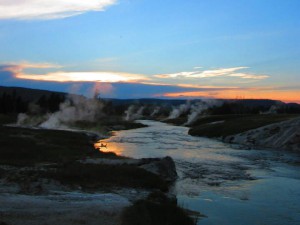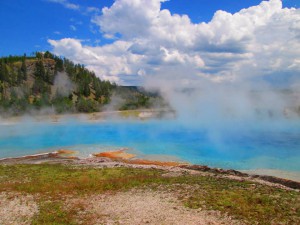This summer my family and I vacationed on one of the world’s largest active volcanoes. We weren’t alone. Every year over three million people visit this super volcano.
Yellowstone National Park covers almost 3,500 square miles in the northwest corner of Wyoming (3% of the park is in Montana and 1% in Idaho). The park is famous for its hydrothermal features, including the Old Faithful Geyser and vivid hot springs such as the Grand Prismatic Spring.
The park’s hydrothermal system is the visible expression of the immense Yellowstone volcano; they would not exist without the underlying partially molten magma body that releases tremendous heat. National Park Service website
These features are all visible reminders of the immense volcano that exists beneath the surface. Recently, a team of seismologists discovered a reservoir of partly molten rock 12–28 miles beneath Yellowstone National Park. This video from Science 360 describes the discovery and why scientists are interested in it. It is important to note that this discovery does not mean that there is new activity or that the volcano under the park is closer to erupting. It does mean that scientist now have a better picture of the underground “plumbing”.
Kelly Grooms
Latest posts by Kelly Grooms (see all)
- The Battle of Shiloh’s Angel’s Glow: Fact, Civil War Legend or Modern Myth? - July 11, 2024
- Mind Control, Mutilation and Death. The Fungal Fate That Lurks in Waiting for Emerging Periodical Cicadas - June 13, 2024
- Measles and Immunosuppression—When Getting Well Means You Can Still Get Sick - May 13, 2024


